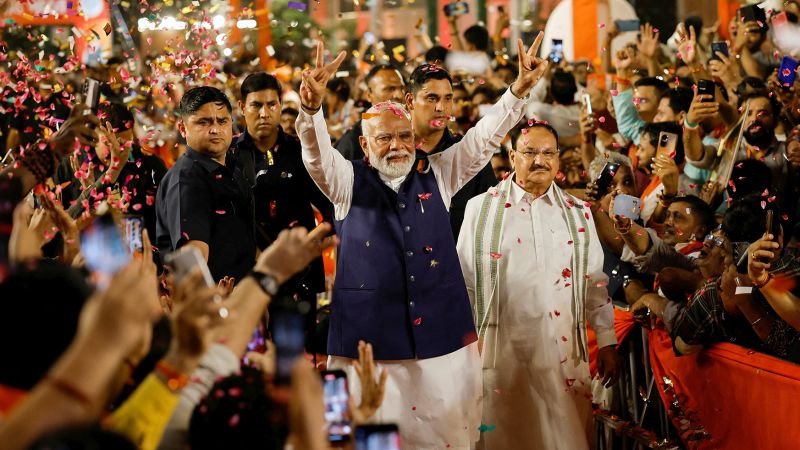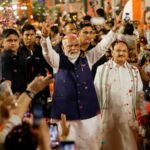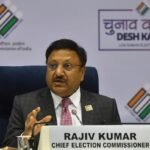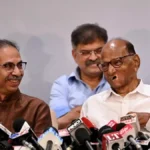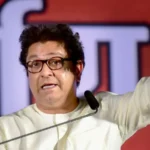Maharashtra’s Lok Sabha elections of 2024 demonstrated a dramatic change in the state of politics as voters soundly rejected the incumbent alliance in favour of the opposition INDIA grouping. Held on July 20, 2024, this election was a critical gauge of public opinion after years of political unrest and shifting coalitions.
Summary of Election Results
With 30 of the 48 seats up for grabs, the Congress, Sharad Pawar’s Nationalist Congress Party (NCP), and Uddhav Balasaheb Thackeray’s Shiv Sena emerged triumphant as the INDIA bloc. The Congress gained 13 seats by themselves, which is a significant rise from their prior representation. Sharad Pawar’s NCP won eight seats, while Uddhav Thackeray’s group took nine. The ruling coalition, which was made up of the BJP, the NCP led by Ajit Pawar, and the Shiv Sena led by Eknath Shinde, only won 17 seats, a sharp decline from their previous total of 31. Notably, Shinde’s party got seven seats and Ajit Pawar’s faction only one, while the BJP’s representation dropped from 23 to just nine.
Elements Affecting the Results of the Election
1. Public Discontent with Communal Politics: Voters were not swayed by the BJP’s emphasis on Hindutva and communal discourse. The public’s tiredness with contentious politics became apparent, despite the party’s attempts to capitalise on issues like the Ram Mandir. This disillusionment was exacerbated under Shinde’s leadership by a surge in hate speech and communal riots.
2. Resurgence of the Congress: This is an especially significant comeback for the Congress party. It has made a comeback to prominence after faltering in past elections, winning a sizable number of seats and demonstrating its capacity to unite support from a wide range of demographics. This rebound suggests that the party’s clout in Maharashtra, which was traditionally a stronghold until 2014, may resurface.
3. Civil Society Engagement: In order to mobilise voters, civil society organisations were essential. Advocating for change and promoting voter turnout, organisations like Maharashtra Democratic Front and Bharat Jodo Abhiyan Maharashtra were present in many constituencies. Their work helped the INDIA bloc win more votes overall, especially from underrepresented groups.
4. The Vanchit Bahujan Aghadi of Prakash Ambedkar’s Impact: Significantly less weight was placed on the Vanchit Bahujan Aghadi, which had earlier gained ground in the Congress-NCP vote share. Its vote percentage fell precipitously from 7.65% in 2019 to just 2.78% in 2024, suggesting that Muslim and Dalit votes were consolidated in support of the INDIA bloc.
Important Election-Related Lessons
Maharashtra’s Lok Sabha elections in 2024 will be a good indicator of how the state’s politics are evolving. The electorate’s desire for stability and a return to more inclusive governance is demonstrated by their rejection of the current coalition. The outcomes also point to the Congress’s potential to take back the historical leadership position in Maharashtra politics, paving the way for a contested environment in the next assembly elections.
The ramifications of these election results will probably have an impact on party policies and voter involvement in the years to come, as Maharashtra navigates this political shift.
Referral:
[1] https://www.loksatta.com/politics/
[2] https://frontline.thehindu.com/election-2024/maharashtra-lok-sabha-election-2024-sharad-pawar-uddhav-balasaheb-thackeray-pm-modi-maha-vikas-aghadi/article68262094.ece
[3] https://www.youtube.com/watch?v=Sm8ekpZ6a8o
[4] https://www.linkedin.com/posts/mayank-jani-26a69b23_networking-professionaldevelopment-gratitude-activity-7193189135115763713-RMk4
[5] https://www.tv9marathi.com/maharashtra/tv9-marathi-live-coverage-latest-updates-on-maharashtra-politics-obc-and-maratha-aarakshan-rains-news-in-marathi-aajchya-thalak-batmya-saturday-20th-july-2024-1237862.html/amp


